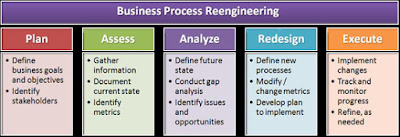CHAPTER 8 ACCESSING ORGANIZATIONAL INFORMATION - DATA WAREHOUSE
1. HISTORY OF DATA WAREHOUSE
- In the 1990’s executives became less concerned with the day-to-day business operations and more concerned with overall business functions
- The data warehouse provided the ability to support decision making without disrupting the day-to-day operations, because;
- Operational information is mainly current – does not include the history for better decision making.
- Issues of quality information.
- Without information history, it is difficult to tell how and why things change over time.
2. DATA WAREHOUSE FUNDAMENTALS
- A Data Warehouse is a logical collection of information-gathered from many different operational database - that supports business analysis activities and decision-making tasks.
- The primary purpose of a data warehouse is to aggregate information throughout an organization into a single repository in such a way that employees can make decisions and undertake business analysis activities.
- A Data Mart contains a subsets of data warehouse information.
- The Data Warehouse then send subsets of the information to data mart.
- Extraction, Transformation, and Loading (ETL) - process that extracts information from internal and external database, transforms the information using a common set of enterprise definitions, and loads the information into a data warehouse.3. MULTIDIMENSIONAL ANALYSIS AND DATA MINING.
- Database contains information in a series of two-dimensional tables.In a data warehouse and data mart, information is multidimensional, it contains layers of columns and rows.
- A cube is the common term for the representation of multidimensional information.
- Data Mining is the process of analyzing data to extract information not to offered by the raw data alone. It is known as 'knowledge discovery.
- To perform data mining user needs data mining tools.
- Data Mining Tools use a variety of techniques to find patterns and relationships in large volumes in information and infer rules from them that predict future behaviour and guide decision making.
4. INFORMATION CLEANSING OR SCRUBBING.- Information cleansing or scrubbing is a process that weeds out and fixes or discards inconsistent, incorrect or incomplete information.
5. BUSINESS INTELLIGENCE
- Business Intelligence refers to application and technologies that are use to gather, provide access to, and analyze data and information to support decision-making efforts.
- Enabling Business Intelligence
- Technology.
- People.
- Culture.






